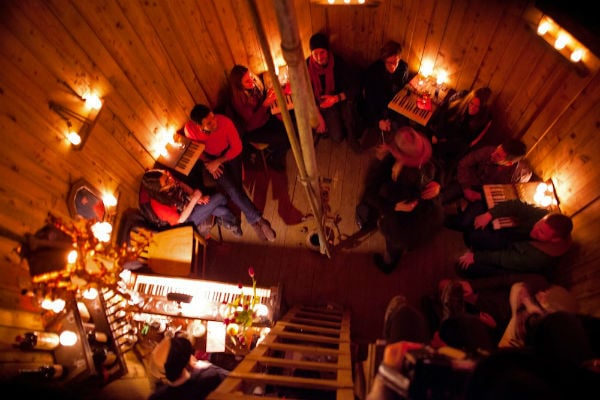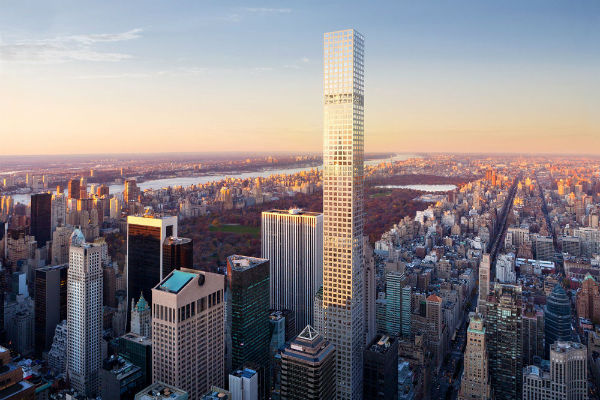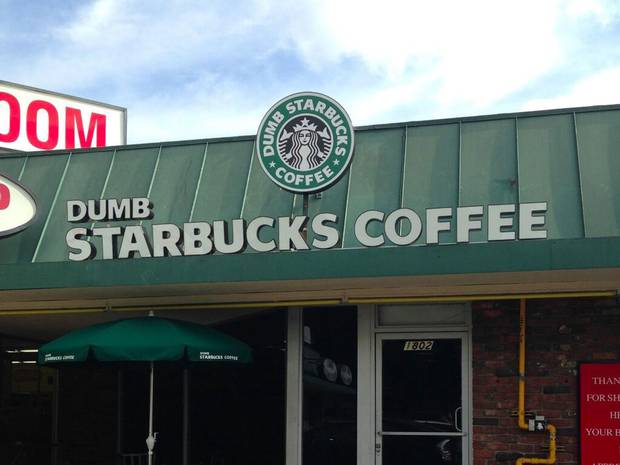Why I Believe the New York Art Scene Is Doomed
This is an article about art and gentrification, the inescapable topic. I have something new to add—that I remember we may be coming to the terminate of a catamenia where being an artist was synonymous with beingness urban, unless we are willing to fight for it—only before I start it, let me say that I take mixed feelings about my own conclusions.
On the one manus, I like New York, and I recall that artists should fight for their identify in it. I believe that this would take some serious coalition edifice and some effort to break out of the shoe-gazing, white-guilt bottleneck where the conversation always gets stuck.
It would not be incommunicable to practise and then. If you read Rosalyn Deutsche and Cara Gendel Ryan'due south "The Fine Art of Gentrification" essay from 1987 almost struggles in the East Hamlet, you tin can see that there was a time when political consciousness was acute plenty within the arts customs in New York that taking a stand against "artists housing" was actually the commonsense radical affair to exercise. Artists clearly saw that they were beingness used by real estate interests to drive out poor communities and communities of colour, and put their future with a larger struggle to change urban priorities.
Of course, those struggles failed to stop the gentrification of the East Village, so the contemporary version would actually accept to exist more sustained, more far-reaching. It could happen, and it'south what I'd like to come across happen. On the other mitt, I think information technology'south important to exist honest well-nigh the hour, and the hour is late.
"The white-hot real estate market burning through affordable cultural habitat is no longer a crisis, it'south a conclusion," Robert Elmes, the director of Galapagos Art Space appear this past year, proverb that his system was decamping to Detroit (meet High Rents Drive Brooklyn's Galapagos Art Space to the Motor City). Presently thereafter, the New York Times returned fire with an commodity stating that reports of New York'southward death as a creative capital are highly overstated. I actually appreciate wanting to do justice to the weird things all the same going on, fifty-fifty if I don't find the examples adduced—a rage for popular-upwardly parties—that disarming. As long equally at that place are interesting people, in that location volition be interesting parties. Only nosotros are talking about a process that is still unfolding, and right now that procedure only goes 1 way.

The Night Heron, a popular-up speakeasy in a New York watertower
Photo: Courtesy The Nighttime Heron
It is worth laying aside our NY-centricness for a second to note that this is part of a much, much bigger tendency. This year you had Jen Graves'southward "How Artists Tin Fight Back Against Cities That Are Taking Reward of Them," from Seattle, and Christian L. Frock's "Priced Out" series from San Francisco, both examples of fine art scenes being smothered. There was even, at year's end, an article on how Asheville lost its absurd. That'south Asheville, North Carolina.
When information technology comes to my own city of residence, the all-time commodity I read last year was from the website Brokelyn. "There is cipher hip and cool happening in Brooklyn," customs organizer Imani Henry told author Camille Lawhead. "It'southward a war."
He so begins to respond the question that gets lost because near gentrification stories are told from the betoken of view of the guilty consciences of beginning-wave gentrifiers: "If people can really think near it, there are people moving to the Poconos and Ithaca in their 70s. People with mental wellness weather condition who have no identify to go or live. Families are being pushed out of their apartments. There's nothing sexy, hot, or cute about it."
It's easy to call up of this as just a process that will go on, the aforementioned equally it ever was. But in the larger scheme of things, we are approaching or have passed a primal inflection point, ane that already has a branded name: "The Great Inversion," from Alan Ehrenhalt'due south imperfect merely interesting book of the same name. In essence, the traditional relationship between suburb and city in American life is reversing. For a long period, the affluent used to move to the suburbs; over fourth dimension, white flight emptied out inner cities of resource. But lately, the wealthy accept been returning to the cities—gobbling them up, in fact. Some of those new apartment towers in Manhattan—such as the vast 432 Park, the tallest the city has ever seen, set to cast a shadow on Fundamental Park—volition not accept much more than 100 units. That's the urban geography of inequality for you.

Artist rendering of 432 Park, which volition exist New York'southward tallest residential building and accept only 104 units
Meanwhile, everyone else is existence pushed out by the same procedure, while new immigrant groups are tending to settle in the suburbs every bit well. This trend is clear: more and more poor people live in the suburbs now than in cities.
The "urban Renaissance" we are living through is a terrific instance of solving a problem by not solving it, or rather, by turning it inside-out. We've imported suburbia to the city, recreating its bucolic aura via cycle lanes and urban gardening, and its gated community vibe via "cleaved windows" policing. Soon it will accept all those stereotypical negative characteristics of suburbia also: lack of human variety, and commercial life crushed under concatenation stores (in his book, Ehrenhalt is strangely enthusiastic about Starbucks as a sign of the rebirth of metropolis life). Meanwhile, we are exporting poverty to places where y'all need a car to survive.

Dumb Starbucks, a stunt parodying the omnipresent coffee chain (from the Comedy Fundamental Show Nathan For You lot)
Information technology is very possible that Detroit volition get a new artists upper-case letter—Elmes says it is accumulating artists at "an astonishing rate"—just my guess is that even so problems volition follow artists there unless the political problems are solved (Galapagos is quite explicitly gambling on its ability to raise real estate values: "the arts are already in the real manor business—they just aren't being rewarded for it"). The pattern of hyping new funky hotspots is one real manor speculators have down cold, and take perfected in such a fashion that it has accelerated. (This is an international process: Come across the New Republic's piece on Berlin, "The Life and Death of a 'Absurd' Urban center".)
A little more than than a decade ago, pundit Richard Florida put this all into a form ripe for marketers everywhere with his The Rise of the Creative Course, which told cities to court creatives as part of a evolution strategy, putting artists, whose incomes are very variable, into a confusing bloc with I-bankers and tech professionals. Now he admits that "creative class"-led development is not beneficial for all, because nigh people can't keep up with ascent rents. Well, estimate what else? His new thing is "Suburban Renewal," then go fix for the "creative suburb" to be a thing. "Peradventure one 24-hour interval artistic types will look down their noses from trendily sketchy suburban enclaves at those lame bourgeoisie in the cities," one author prognosticates.
Maybe that doesn't sound probable. But then 50 years ago when artists started moving into the blighted, abandoned industrial spaces in SoHo, no 1 would take thought that "loft living" would define the aesthetics of a new urban lifestyle. Well, the current conjunction looks to me like that particular cycle has matured, and a new one is ready to begin. Somewhere, some new gear up of artists is inventing a new, very unlike way of existence that will also look to have been inevitable in 50 years. In a very speculative way, I would say that Carlo McCormick'south ArtNews article last year on the rise of the "hickster"—well-nigh artists leaving the city altogether—is a better hint of the future in a generation or so than Galapagos's move to Detroit, which seems just a stop on the mode.
Neither is my favored pick. My preferred option is a fight for the city. Y'all've got to be clear on what that fight would take, though: Information technology involves challenging a tendency that we have already allow go very, very far. Otherwise, gas upward the automobile, because nosotros are heading to the burbs.
Follow Artnet News on Facebook:
Want to stay ahead of the art world? Subscribe to our newsletter to go the breaking news, eye-opening interviews, and incisive critical takes that bulldoze the conversation forwards.
Source: https://news.artnet.com/opinion/why-i-believe-new-yorks-art-scene-is-doomed-214970
0 Response to "Why I Believe the New York Art Scene Is Doomed"
Enregistrer un commentaire